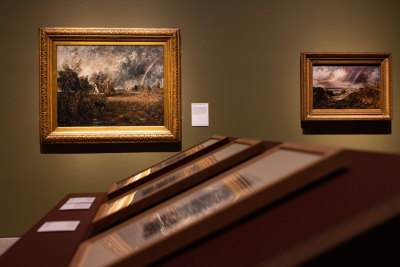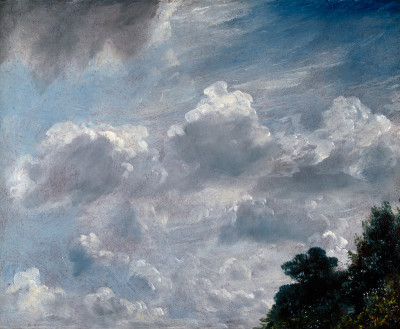Artist of the month: June 2015
Artist of the month: June 2015
Alfred Elmore RA (1815 – 1881)
By The RA Collections Team
Published 2 June 2015
This year marks the 200th anniversary of Alfred Elmore RA’s birth, an artist who continually explored theatrical and historical scenes.
-
Alfred Elmore was born in County Cork and moved to London with his family at the age of 12. He practised drawing from the antiques on display at the British Museum before entering the RA Schools in 1832. In the mid-1830s, Elmore spent time in Paris, studying in private ateliers and copying works in the Louvre. He spent three months in Munich in 1840 before travelling around Italy studying the works of the old masters and settling in Rome for two years.
On his return to London in 1844, Elmore became a regular exhibitor at the Royal Academy, showing mainly historical and genre scenes. He also became friends with artists such as John Phillip RA, Augustus Egg RA and William Powell Frith RA, who belonged to the informal artists group, the St John’s Wood Clique, founded in the 1830s. Elmore became a late member of this short-lived group.
Elmore was elected a member of the Royal Academy in 1857 and choose to present as his Diploma work a scene from one of Shakespeare’s comedies, Two Gentleman of Verona (pictured). The mid-19th century saw an increased fascination with Shakespearean subjects, coinciding with the formation of the Pre-Raphaelite Brotherhood in 1848. The work illustrates a moment in Scene I, Act iii, when the Duke feigns sleep as he becomes aware of the love between his daughter, Sylvia, and Valentine, who is contested in his courtship by Proteus. When the work was exhibited at the Royal Academy in 1858, the following lines, spoken by the Duke of Milan, were included in the catalogue:
“This love of their’s myself have often seen.
Haply, when they have judged me fast asleep.”
-

Alfred Elmore RA, Subject from 'Two Gentlemen of Verona', 1857.
Oil on canvas. © Royal Academy of Arts, London.
-
The speech is the Duke’s response to Proteus, who has betrayed his friend Valentine by telling the Duke that Valentine and Silvia plan to elope, in attempt to anger the uninformed father.
Elmore stages the scene effectively, placing the dozing Duke in a velvet chair, foreshortening his figure. Behind and above him, Valentine makes an advance towards Silvia, who wrests him away. She directs a cautionary glance to her reclined father, but – unlike the viewer – cannot see his suspicious (and clearly open) eyes.
Elmore completed a body of Shakespearian scenes during his career, exhibiting five at the Royal Academy. This piece and others like it also allowed Elmore to engage his interest in Renaissance dress. The artist’s sketchbook (now in the V&A collection) reveals extensive study of period clothing.
-

David Wilkie Wynfield, Alfred Elmore RA, 1860.
Albumen print. © Royal Academy of Arts, London.
-
A photograph of Alfred Elmore (pictured), taken by David Wilkie Wynfield also shows the artist in medieval costume. Wynfield took a series of photographs during the 1860s of artists in historical dress, and many of his sitters, like Wynfield himself, were members of the St. John’s Wood Clique. These photographs with their strong accents of light and shade were very influential on the work of early photographers such as Julia Margaret Cameron.
As well as Shakespearian subjects, Elmore was a regular exhibitor of historical and genre scenes at the Royal Academy. He was particularly interested in Royal subjects, especially those which allowed him to reveal intimate moments of emotional intensity. His sympathetic “behind-the scenes” depictions Marie Antoinette and Mary, Queen of Scots had a strong popular appeal. In this portrait by William Maw Egley (1826-1916) (pictured), Elmore is depicted at work in his studio, probably that in 1 St Alban’s Road, Kensington, where he lived from 1858 until his death in 1881. The painting is informal and domestic, reflective of Elmore’s own painterly style. On the easel is his painting The Tuilleries, 20 June (1792), showing Marie Antoinette and her children, which was exhibited at the Royal Academy in 1860.
Elmore painted this intimate self-portrait (pictured) at about the same time as Egley depicted him in his studio. It was probably painted for the artist himself as it remained in his family’s possession until it was given to the RA by a descendant in 1926. The image projected in this portrait is much more serious and intense than that of Wynfield’s theatrical portrait.
-

William Maw Egley, Portrait of Alfred Elmore RA in his studio, 1859.

Alfred Elmore RA, Self-Portrait of Alfred Elmore RA, 1860s.
-
Find out about June’s object of the month, Camille Pissarro’s ‘Paysannes Assises (Seated Peasants in an Orchard)’, 1885.







